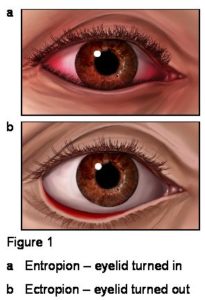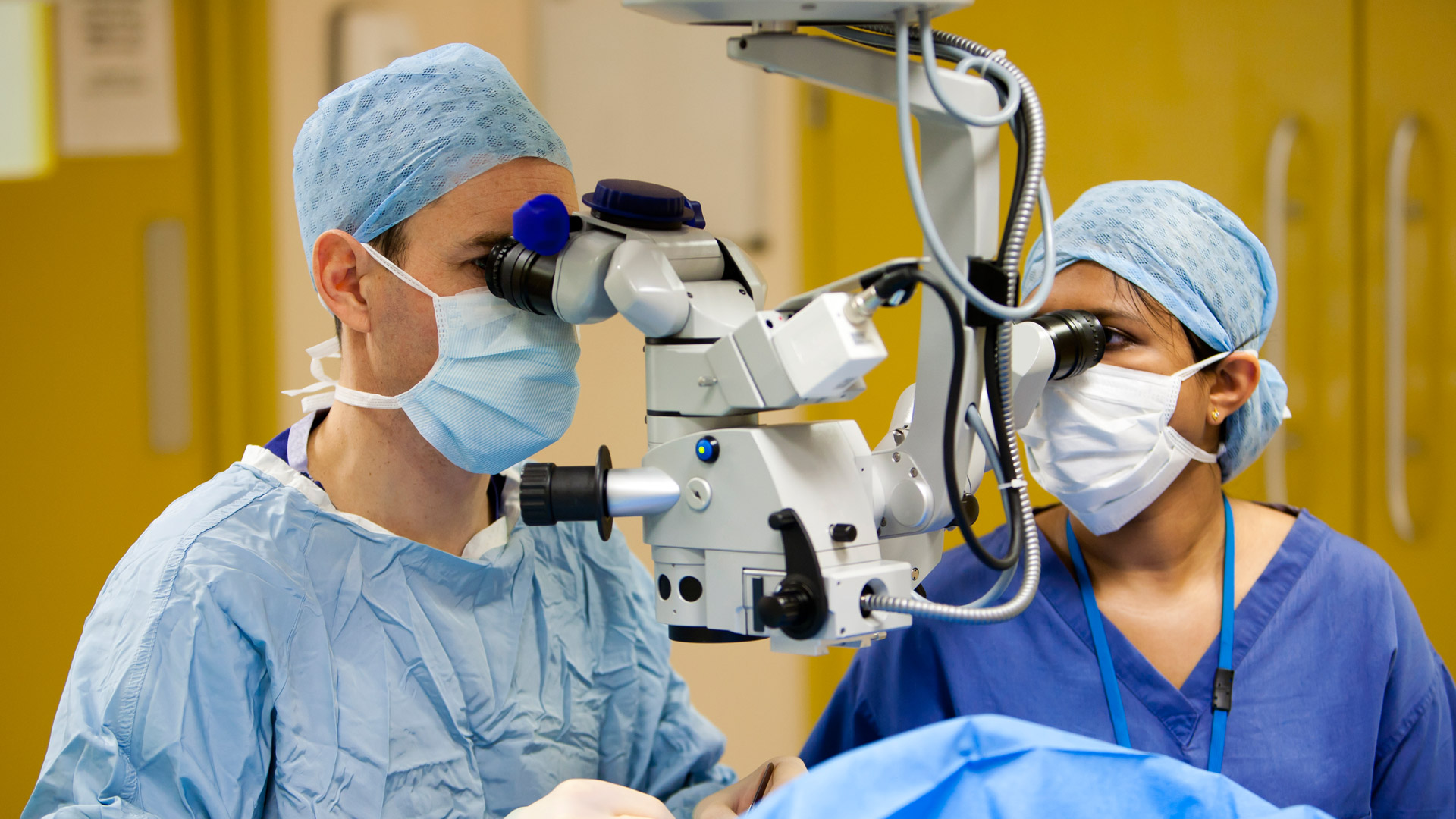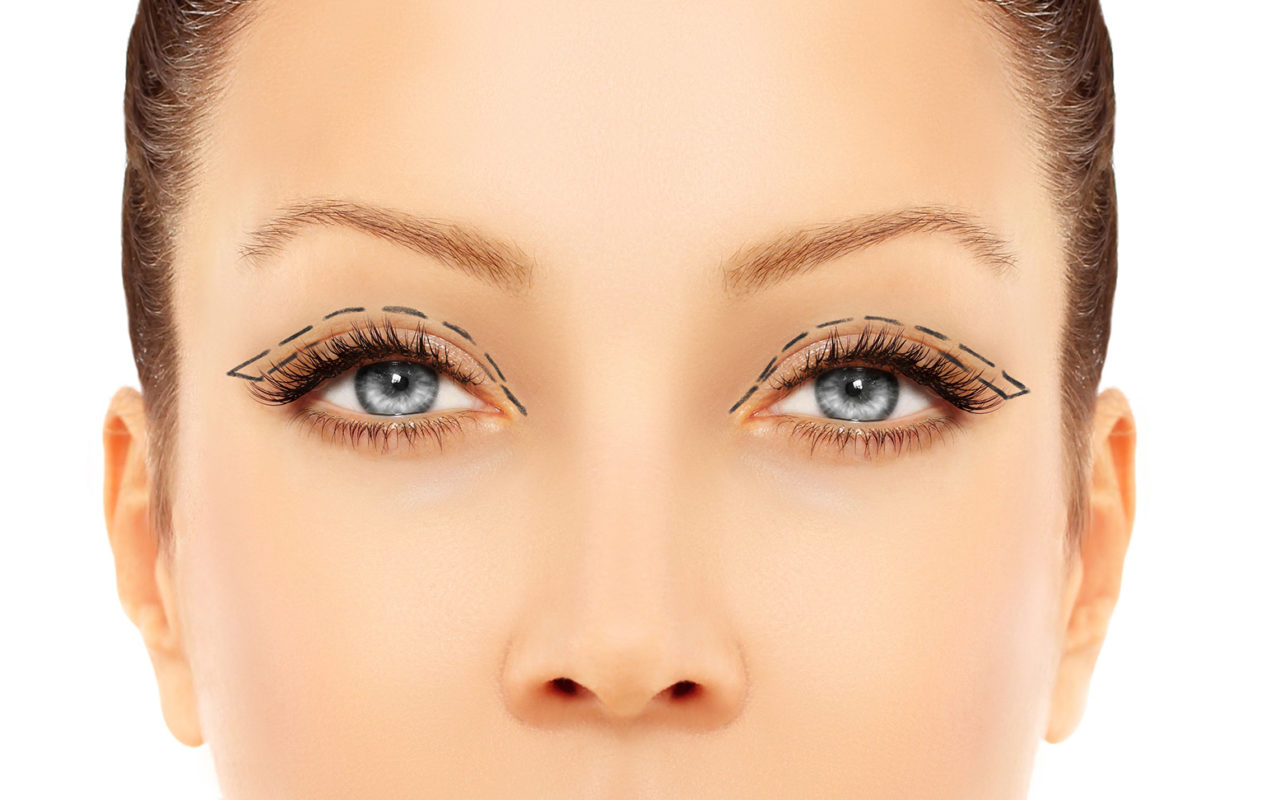EYELID SURGERY
Upper-Lid Blepharoplasty
Upper-Lid blepharoplasty involves removing excess fat, skin and muscle from the upper eyelids. It may be performed for cosmetic reasons or to improve sight by lifting droopy eyelids out of the patient’s field of vision. The procedure is usually performed with local anesthesia and mild IV sedation, lasting 45 minutes. Incisions are made along the eyelid creases of the upper lids. The surgeon removes excess tissue through these incisions and then stitches them closed with fine sutures. Stitches are removed after 10 days. Contact lenses may not be worn for two weeks. The effects of blepharoplasty can last for a long time and are sometimes even permanent.
Entropian and Ectropion Repair
Entropion and ectropion are two types of eyelid problems that can cause discomfort and irritation of the eyes. They both generally require surgical repair to avoid eye health issues and potential vision loss.
Entropion is a “turning in” of the eyelid. Typically occurring on the lower eyelid, the skin and lashes rub painfully against the cornea. The condition may cause the lid to turn in constantly or only at times when the eyes are closed tightly.
Entropion usually arises as a result of aging since the muscles around the eyes may progressively weaken. A spasm or relaxation of the muscles near the eye can cause the lid to turn inward. Other causes can include injury, congenital defect, skin infections and various inflammatory conditions. You may also be at higher risk for entropion if you have undergone facial surgery or have facial scarring that affects the natural curve of the eyelid.
Lubricating eye drops may be used to lessen certain symptoms such as dry eyes. Temporary relief can also sometimes be found by using BOTOX (trademark symbol), skin tape to hold the eyelid in place or strategically placed stitches. But ultimately, entropion generally needs to be corrected through a brief surgical procedure in which the eyelids are repositioned. The area is numbed with a local anesthetic and sometimes light sedation is provided as well. For entropion due to muscle weakness, the surgery may involve the removal of a small section of eyelid to tighten the muscles in the area.
Ectropion is a “turning out” of the eyelid. Typically occurring on the lower eyelid, the skin of the inner lid is exposed, either in one section of eye or across the entire lid. This prevents tears from draining from the eye correctly, resulting in irritation.
Common causes of ectropion include age-related weakening of the connective tissue around the eye, sun damage, tumors, burns and the removal of too much skin during blepharoplasty. In some cases, ectropion occurs as a congenital birth defect or as a result of facial palsy.
Artificial tears can help provide temporary relief from dryness. But for full correction of ectropion, a surgical procedure in which the lid is tightened is usually necessary. The area is numbed with a local anesthetic and sometimes light sedation is provided as well. For ectropion due to muscle weakness, the surgery may involve the removal of a small section of eyelid to tighten the muscles in the area. When the ectropion is caused by scars or prior surgery, the procedure typically relies on a skin graft to allow a repositioning of the eyelid.


